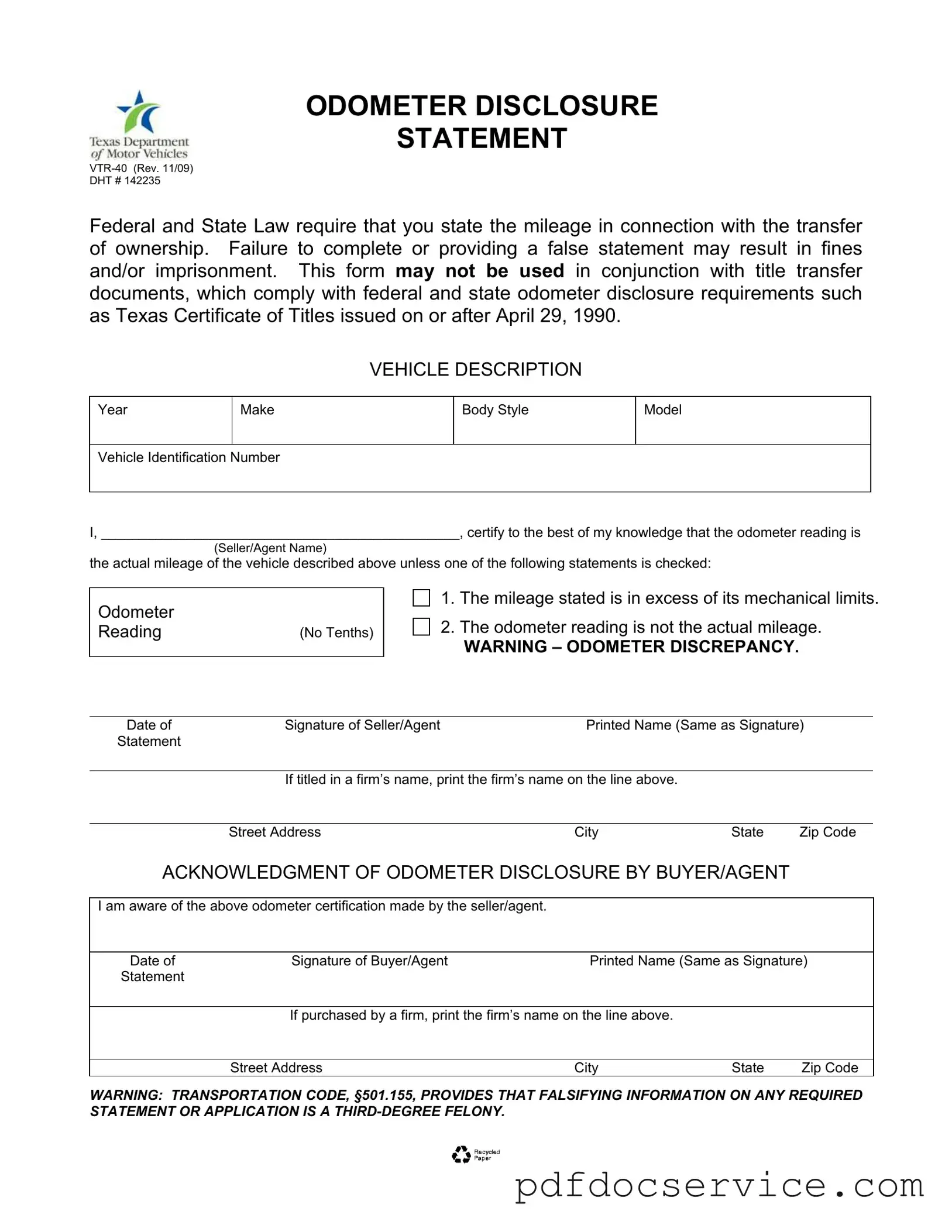The Texas Odometer Statement form, officially designated as VTR-40, plays a crucial role in the transfer of vehicle ownership within the state. This form is essential for documenting the mileage of a vehicle at the time of sale, as mandated by both federal and state law. Accurate mileage reporting is vital, as any inaccuracies or false statements can lead to significant penalties, including fines or imprisonment. The form requires specific details, such as the vehicle's year, make, model, body style, and Vehicle Identification Number (VIN). Sellers or their agents must certify that the reported odometer reading reflects the actual mileage, unless they indicate otherwise by checking specific statements regarding mechanical limits or discrepancies. Additionally, the form includes sections for both the seller and buyer to acknowledge the odometer disclosure, ensuring that both parties are aware of the information provided. It is important to note that this form cannot be used alongside title transfer documents that already meet odometer disclosure requirements, particularly for titles issued on or after April 29, 1990. The consequences of falsifying information on the Texas Odometer Statement are serious, as outlined in the Transportation Code, which classifies such actions as a third-degree felony.
